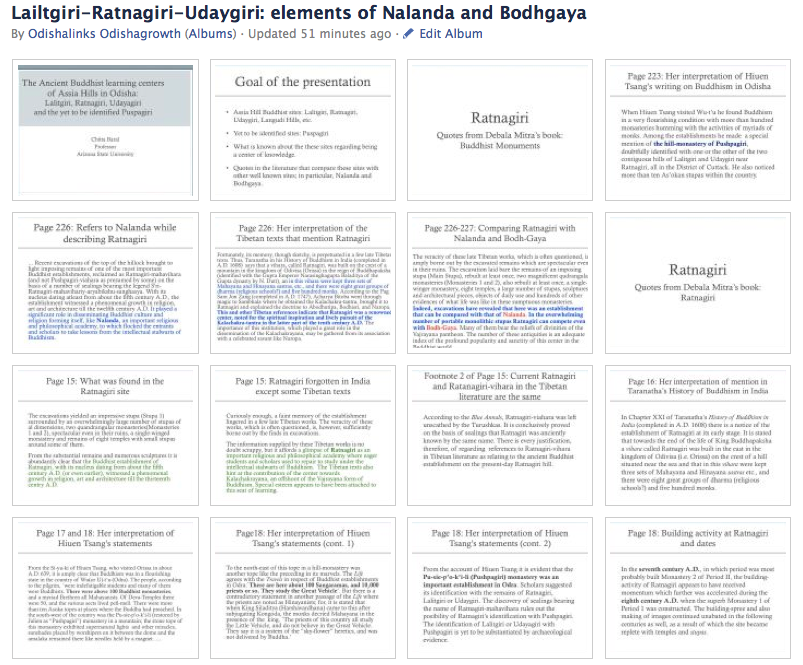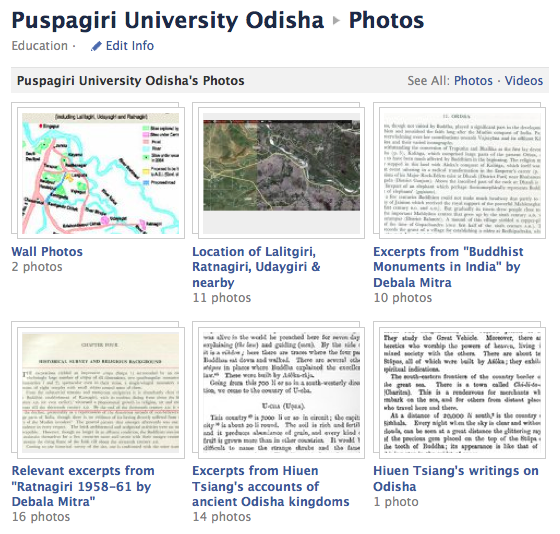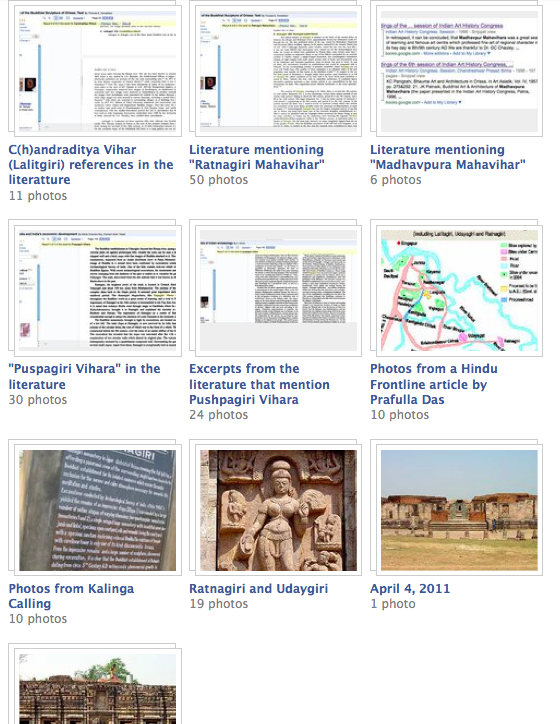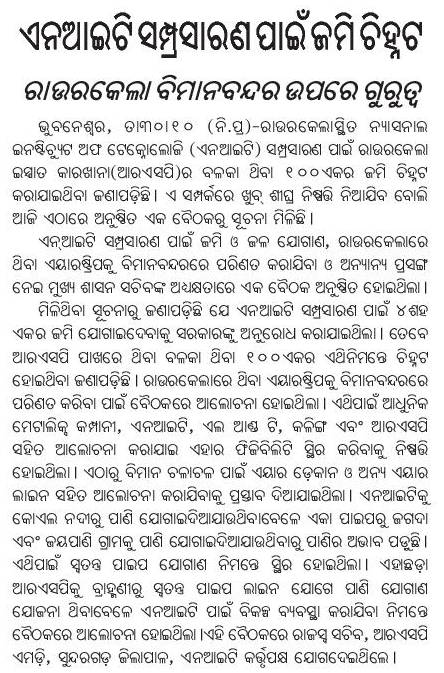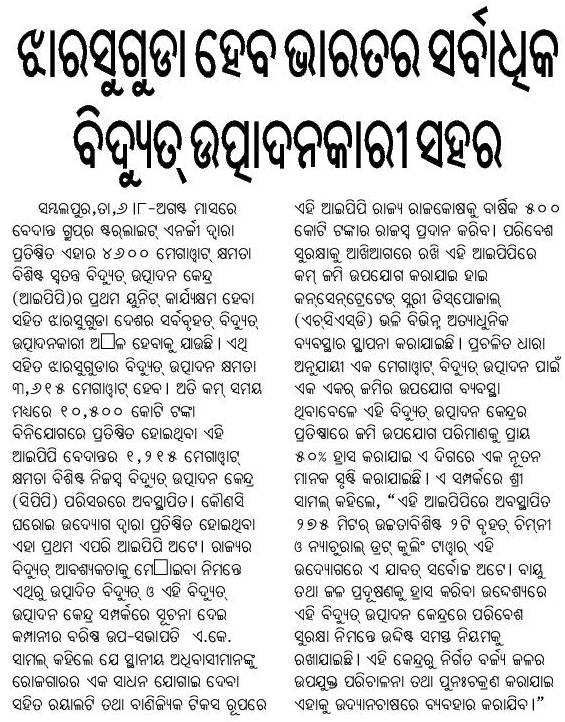From the Budget pages http://orissagov.nic.in/finance/BUDGET/budget.htm. The speech, in pdf, is located here. Following is a text version with some possible conversion errors.
Hon’ble Speaker Sir,
At the outset, I express my deep gratitude to you, Leader of this House, Hon’ble Chief Minister, Hon’ble Leader of the Opposition and all Members of this August House for having given me this opportunity to present the full-fledged Budget for the financial year 2007-08.
2. I would like to mention here that instead of full-fledged Budget for2007-08, a Vote on Account Budget for 4 months was presented by me on last 29th March. This Vote on Account Budget was passed by the Legislature. Now a full-fledged Budget for the financial year 2007-08 is presented for approval of this August House.
3. While presenting the Budget for the financial year 2007-08, I deem it proper to highlight some facts on the fiscal situation of the State for information of Hon’ble Members.
4. The State Government have taken many reform measures to correct the fiscal problems of the State. These include expenditure rationalization measures, revenue step-up measures, improvement in delivery system and proper utilization of limited resources etc. Needless to mention that through various additional resource mobilization and expenditure rationalization measures, there has been an improvement in fiscal management and notable results have been achieved. Some examples are as follows:
(i) Revenue deficit has been completely eliminated much before the financial year 2008-09 which was the target set by Medium Term Fiscal Plan.
(ii) While the revenue deficit of the State was Rs.2574.19 Crore in 1999-2000, this deficit was reduced to Rs.522.30 Crore in 2004-05. Our State has become a revenue surplus State from a revenue deficit State for the first time in 2005-06 after a long gap of 22 years. Revenue surplus has been estimated at Rs.1045.76 Crore in 2007-08.
(iii) Another significant aspect of financial management is achieving expected success in resource mobilization. It is to be mentioned here that because of State’s constant efforts, remarkable improvement in State’s own resources has been achieved since 1999-2000. Where as during 1999-2000, State’s own tax and non-tax revenue was Rs.2420.56 Crore, during 2004-05 this has reached Rs.5522.12 Crore and during 2005-06 the achievement was Rs.6534.18 Crore. While State’s own tax and non-tax revenue were estimated at Rs.6452.99 Crore in the original Budget for the year 2006-07, the same has been estimated at Rs.8196.28 Crore in 2007-08.
(iv) Another aspect of sound fiscal management is less dependence on Overdraft and Ways & Means advance from RBI. From 2005-06 onwards the State Government have neither resorted to Overdraft nor Ways & Means advance. This is indicative of the improvement in the financial management of State Government.
(v) 11th Finance Commission recommended that if the gap between State’s Revenue Deficit & Revenue Receipt remains within 5% during 2000-01 to 2004-05, the State Government would be eligible for Fiscal Incentive grant. Since the State Government was able to contain the revenue deficit within the stipulated percentage during the aforesaid period, Rs.315.35 Crore have been received towards Fiscal Incentive grant.
(vi) Similarly, as per recommendations of 12th Finance Commission, State Government have availed Debt Relief of Rs.381.90 Crore for fiscal achievement during 2004-05 and are also likely to get similar Debt Relief during 2006-07 for fiscal achievement during 2005-06.
(vii) On the other hand, whereas during 1999-2000, 79.17% of the net loan was used to meet revenue deficit, the revenue surplus during 2005-06 is Rs.481.19 Crore. Hence, there is no necessity at present to meet revenue deficit out of the loan amount.
(viii) Because of encouraging revenue mobilization efforts, the State Plan outlay has been increased to Rs.5105.00 Crore for the year 2007-08. While in the original Budget for 2006-07, the State Plan was fixed at Rs.3500.00 Crore, it was increased to Rs.3600.00 Crore as per the revised estimate for 2006-07. Compared to last year, the State Plan expenditure has remarkably increased this year, which will accelerate the pace of development of the State.
(ix) Despite success of the State Government in various fields, it is to be admitted that heavy debt burden is another indicator of weak fiscal situation. The State’s debt burden stands at Rs.36459.07 Crore as on 31.3.2006, which is 48.16% of the GSDP. As per the recommendations of the 12th Finance Commission, the Debt-GSDP ratio should be 28%. Similarly, as per the recommendations of the Commission, Interest Payment -Revenue Receipt ratio should be 15%. As against this, the ratio of Interest Payment to Revenue Receipt is 26.2% during 2005-06. I may point out here that it is not at all wrong to incur loan for carrying out developmental activities. But the loan should not be used to meet the Revenue Deficit. As a result of continuous efforts of the State Government, the ratio of Debt to total Revenue Receipt has been reduced from 308% in 1999-2000 to 259% in 2005-06.
(x) The State Government have been able to save Rs.144.47 Crore towards interest payment by swapping high cost loan with low cost loan as per Debt Swap Scheme of Govt. of India.
(xi) In the meantime, the State Government have resorted to Debt Buy-back and made pre-payment of high cost market loan amounting to Rs.394.61 Crore.
5. I would like to inform this August House that previously the Central Assistance to the State Government had the Grant and Loan component in the ratio of 30:70. But as per the recommendation of the 12th Finance Commission, State Government is now arranging the loan portion of the Central Assistance on its own. The system has been made effective from the financial year 2005-06. Moreover, Government of India had fixed the net loan ceiling of Government of Orissa at Rs.1677.00 Crore for the financial year 2006-07. In order to finance the State Plan outlay of Rs.5105 Crore finalised by the Planning Commission for the current financial year, the net loan has been estimated at Rs.1026.29 Crore in the Budget.
6. We shall have to reduce salary expenditure because salary expenditure constitutes 49% of the revenue expenditure net of Interest Payment and Pension. But as per the recommendation of the 12th Finance Commission, the ratio should be within 35%. In order to achieve this target, we shall have to work with patience and commitment. So it is my sincere belief that your unhesitating support, as in the past, will also continue.
7. It is a fact that in a welfare State, provision of expenditure is to be allocated keeping in view the problems of the people. But in the context of limited resources of the State, we shall have to prioritize the expenditure for the development of the State. The crux of the matter is to enhance the Capital Expenditure by curtailing unproductive expenditure, so that there will be space for infrastructure development as well as inflow of private investment.
8. Taking into account the State’s own tax & non-tax revenue, State’s share from central taxes and Grant-in-Aid from the Centre, while State’s total Revenue Receipt during 2007-08 has been estimated at Rs.19467.20 Crore, the Revenue Expenditure has been estimated at Rs.18421.44 Crore. As against the revenue surplus of Rs.481.20 Crore and Rs.747.76 Crore in 2005-06 and 2006-07 (Revised Estimate) respectively, it has been estimated at Rs.1045.76 Crore for 2007-08. On the other hand, in the Capital Account, the estimated expenditure would be more by Rs.1220.43 Crore than the receipt. The expenditure on account of Capital Outlay, disbursement of Loans and repayment of installment of earlier loans taken together would be more than the receipts from the loans and advances from different sources together
with the recovery of loans. In toto, the deficit in the Consolidated Fund has been estimated at Rs.174,67,04,000/-and an equal amount has been estimated as surplus in the Public Account. On the whole, the receipts and expenditure have been balanced taking into account the Revenue Account, Capital Account and Public Account together. Hence this is a Balanced Budget with revenue surplus.
9. I now like to present some of the highlights of the provisions made both under State Plan and Non-Plan sectors in the full fledged Budget for 2007-08.
10. Highlights of the State Plan I now point out the Highlights of State Plan Outlay.
• Ours is an agrarian State. So the popular Government Agriculture under the leadership of Hon’ble Chief Minister, Sri Department Naveen Patnaik, has given importance to enhance income of farmers by increasing production of traditional crop and diversion to high value cash crops, particularly to horticultural crops in high lands. While Rs.1.40 Crore was provided in the Budget for the 2006-07 for development of horticultural activities in 11 Non-Mission Districts, the same has been increased to Rs.3.05 Crore in the Budget for 2007-08.
• While Rs.20 lakh was provided in the original Budget for 2006-07 for Agriculture Promotion and Investment Corporation Limited (APICOL), Rs.50 lakhs has been provided in the Budget of the current year.
• While there was a provision of Rs.1.78 Crore for fertilizer, bio fertilizer, insecticide and bio-insecticide in the original Budget for 2006-07, Rs.5.51 Crore has been provided in the Budget for 2007-08.
• While there was no provision for Micro Irrigation Programme under State Plan Sector of Agriculture Department in the original Budget for 2006-07, Rs.50 lakh has been provided in the Budget for current financial year.
• While Rupees One Thousand was provided in the original Budget for 2006-07 towards subsidy under the new Agriculture Policy, the same has been enhanced to Rs.3 Crore in the Budget for 2007-08.
• For the first time, in order to encourage the cultivation of Potato, Vegetables & Spices, a sum of Rs.1 Crore has been provided in the Budget for 2007-08.
• Cultivators will be given due encouragement with a view to increasing the production of oil seeds like groundnut and cultivation of pulses and maize. Rs.10.49 Crore has been provided in the Budget for the year 2007-08 which includes State Share of Rs.2.72 Crore for providing assistance to this sector.
• You are all aware of the fact that priority is being given to Soil & Water Conservation through Watershed Development Programme by the Government under the leadership of Hon’ble Chief Minister, Sri Naveen Patnaik. The Budget estimate for 2007-08 provides Rs.18.40 Crores under the Work Plan for Macro Management of Agriculture towards development of Watersheds under NWDPRA and River Valley Projects.
• While the original State Plan for 2006-07 under Agriculture Department was Rs.48.08 Crore, it has been increased to Rs.60.65 Crore in 2007-08.
• While Rs.363.00 Crore was provided in the original Budget for the financial year 2006-07 for Accelerated Irrigation Benefit Scheme, the same has been increased to Rs.464.28 Crore in the Budget for the current year.
• A new scheme named “Biju Gram Jyoti” has been prepared in order to provide electricity in villages having population of less than 300 and for this purpose, Rs.50 Crore has been provided in the Budget of Energy Department in the current year.
• The State Government has implemented a new scheme known as Biju K.B.K. Yojana in K.B.K. Districts in 2006-07 in the name of legendary leader late Biju Patnaik and a sum of Rs.120.00 Crore has been provided for this purpose in the current year’s Budget.
• The State Government have enhanced MLALAD Fund from Rs.50 lakh to Rs.75 lakhs. An amount of Rs.147 Crore has been provided in the Budget of the current financial year which includes arrear of Rs.36.75 Crore of previous year on account of increase in MLALAD fund and Rs.110.25 Crore for the current financial year.
• Rs.30 Crore has been provided in the Budget of the current financial year for Western Orissa Development Council (WODC).
• A sum of Rs.16.10 Crore has been provided in the Budget of Planning & Co-ordination Department for Orissa State Employment Mission.
• The State Government have launched a new Scheme called “Gopabandhu Gramin Yojana” (GGY) from the financial year 2006-07 with a view to providing additional development assistance to the targeted 11 Districts which are not covered under the Backward Region Grants Fund. The main objective of the Scheme is to provide infrastructure consisting primarily of Electricity, Road and Water Supply to such Revenue villages. For the financial year 2007-08, a sum of Rs.110.00 Crore has been proposed specifically in the Budget.
• While Rs.1 Crore was provided in the Budget for the financial year 2006-07 for TRIPTI Programme meant for poverty eradication, the same has been increased to Rs.45 Crore in the Budget for 2007-08.
• A sum of Rs.69.65 Crore has been proposed as state share in the Budget for 2007-08 towards Indira Awas Yojana as against Rs.51.00 Crore provided in the Budget of last financial year.
• While there was no provision in the original Budget of 2006-07 towards National Rural Employment Guarantee Scheme, Rs.100 Crore has been proposed as state share towards NREGS for the financial year 2007-08.
• Central Government have implemented Backward Region Grant Fund in 19 backward Districts of the State. Rs.324.28 Crore has been provided in the Budget for the financial year 2007-08 for the purpose.
• While Rs.13.03 Crore was provided in the State Plan Budget in 2006-07 under National Family Benefit Scheme for One Time Assistance of Rs.10,000 to bereaved BPL families on death of chief earning member of the family, in the current year’s Budget an equal amount has also been provided for the purpose.
• A sum of Rs.67,19,42,000 was provided in the original Budget for 2006-07 towards State’s share of Mid-Day-Meal. An equal amount has also been provided in the Budget estimate for 2007-08.
• The Emergency Feeding Programme is being implemented in the 8 KBK Districts. Under the Programme, 2 lakh old, infirm, and indigent persons belonging to BPL households are provided cooked food for one time in a day. Each beneficiary is provided with 250 gms. of rice per day. For this purpose, Rs.20.50 Crore is proposed in the Budget for 200708.
• While a sum of Rs.32.81 Crore was provided in the original Budget for 2006-07 towards share of State Government for Supplementary Nutrition Programme, it has been increased to Rs.96.07 Crore in 2007-08.
• Pre-Matric Scholarship of residential students belonging to S.T. and S.C. communities has been increased. While there was a provision of Rs.40.82 Crore in the original Budget of 2006-07 for the purpose, the same has been increased to Rs.84.77 Crore in the Budget for 2007-08. Similarly, Rs.3.34 Crore has been proposed in the Budget Estimate for 2007-08 towards Post-Matric Scholarship.
• In order to provide cycles to girl students belonging to Scheduled Tribe communities who have passed HSC Examination and pursuing higher education, it has been proposed to provide Rs.81.00 lakhs in the current year’s Budget.
• There is a provision of Rs.53.01 Crore in the Budget for 2007-08 for construction of Hostels for SC & ST students.
• There is a provision of Rs.127.14 Crore in the Budget for 2007-08 under Special Central Assistance for Tribal Areas Sub-Plan. The same is meant for development of the people of Tribal Areas.
• While there was provision of Rs.101.43 Crore towards Grant-in-Aid Salary in the original Budget for 2006-07, the same has been increased to Rs.125.56 Crore in
the Budget for the year 2007-08.
• It has been proposed to allocate Rs.128.35 Crore towards Grant-in-aid salary in respect of Higher Education Department out of which Rs.21.00 Crore is meant for Non-Government Colleges. Similarly, it has been proposed to allocate Rs.5.00 Crore for Infrastructure Development of Ravenshaw University.
• Rural Health Mission under Health and Family Welfare Department is being implemented in order to provide health care facilities in rural areas. It has been proposed to allocate Rs.60.92 Crores in the Budget for 2007-08 towards the State’s share.
• It has been proposed to complete 3 bridges and 8 roads covering 76.56 km at an outlay of Rs.54.73 Crore during 2007-08 under Central Road Fund.
• It has been proposed to allocate Rs.115.00 Crore during current financial year under RIDF for construction and improvement of Roads & Bridges under Works Department. An equal amount was alsoprovided in the original Budget for 2006-07.
• As against the original provision of Rs.31.00 Crore in the Budget for 2006-07, a sum of Rs.46.00 Crore has been estimated in the Budget of current financial year to improve 7 roads under One Time Additional Central Assistance.
• It has been proposed to allocate Rs.92.20 Crore in the Budget for the current financial year towards Orissa State Road Project under Externally Aided Project (EAP). It is to be mentioned that in the original Budget of the last year, a sum of Rs.51.00 Crore was provided for this propose.
• For connectivity of Roads & Bridges in KBK Districts under Special Central Assistance Scheme, a sum of Rs.8.00 Crore has been provided in the Budget for the current financial year.
• In Works Department while in the original Budget for the financial year 2006-07, Rs.377.16 Crore was provided under the State Plan Sector, this has been increased to Rs.430.41 Crore during the current financial year.
• A new scheme has been proposed to be implemented in the current financial year under State Plan in order to provide self-employment to the unemployed youth. For this purpose, Rs.3.02 Crore has been proposed in the Budget for the current year.
• For the first time, a sum of Rs.6.80 Crore has been proposed in the Budget for 2007-08 for Infrastructure Development of Constituent Colleges under Biju Pattnaik University of Technology (BPUT).
• While there was provision of Rs.87.30 lakh in the original Budget for 2006-07 for Self Employment of unemployed S.C youth, the same has been increased to Rs.2.00 Crore in the Budget for the current year.
• In order to implement a new scheme named “Intensive Mineral Exploration and Assessment of Steel & Mines Mineral Resources”, Rs.5.00 Crore has been provided in the Budget of the current financial year.
• While there was a provision of Rs.3.81 Crore for “E-governance” in the original Budget for 2006-07, it has been increased to Rs.18.76 Crore in the Budget for 2007-08.
• For the first time, funds amounting to Rs.5.00 lakh has been provided in the Budget of I.T. Department for “On Line File Movement & Tracking System”.
• It has been proposed to allocate Rs.4.20 Crore in the Budget of the current year for establishment of “International Institute of Information Technology”.
• There was provision of Rs.1,10,80,000 in the original Budget for 2006-07 of Science and Technology Department for “Integrated Rural Energy Programme”. An equal provision has also been made in the Budget for the current financial year.
• While there was provision of Rs.16.00 lakh for “Orissa Science Academy”, it has been proposed to increase the same to Rs.20.00 lakh in the Budget for the current financial year.
• While there was provision of Rs.13.98 lakh in the original Budget for 2006-07 for popularization of Science, it has been proposed to allocate Rs.30.00 lakh during the current financial year for the purpose.
• While there was provision of Rs.56.25 Crore in the original Budget for 2006-07 in respect of “Jawaharlal Nehru National Urban Renewal Mission”, it has been proposed to allocate Rs.62.25 Crore in the Budget of the current financial year.
• It has been proposed to allocate Rs.25.40 Crore in the Budget for the year 2007-08 for Urban Water Supply.
• A sum of Rs.21.60 Crore and Rs.6.39 Crore have been provided in the Budget for the financial year 2007-08 as Grant-in-aid to Orissa Water Supply and Sewerage Board and Bhubaneswar Development Authority respectively in order to repay the loan obtained from HUDCO for Water Supply Project.
• As against the provision of Rs.80.00 Crore in the original Budget of last year, a sum of Rs.100.00 Crore has been provided in the Budget for the current financial year towards Rural Water Supply.
• During the current financial year, there is a provision of Rs.58.00 Crore under RIDF for construction and improvement of Roads and Bridges under Rural Development Department.
• There is total provision of Rs.185.10 Crore in respect of State Plan under R.D. Department during the current financial year.
• Rs.3.00 Crore has been provided in the State Plan Sector in the Budget for the year 2007-08 in respect of Tourism Department for preparation and display of high quality Cinema and for promotion of Tourism .
• While there was total provision of Rs.7.05 Crore in the original Budget of 2006-07, it has been augmented to Rs.10.16 Crore in the Budget of the current financial year.
Plan Outlay in other Sectors
• As against the original provision of Rs.290.00 Crore in the Budget for the year 2006-07 in respect of Rural Infrastructure Development Fund, it has been proposed to allocate Rs.310.00 Crore in the Budget for the year 2007-08.
• While Rs.516.00 Crore was provided in the original Budget for 2006-07 for Externally Aided Projects, the same has been increased to Rs.793.20 Crore in 2007
11. Highlights of Non-plan Revenue Expenditure. Rs.18,078.24 Crore has been provided towards Non-Plan Revenue Expenditure in the Budget for the financial year 2007-08. I now point out some important highlights of the Non-Plan revenue expenditure for information of Hon’ble Members of the House.
• State Government is giving adequate emphasis on development of Higher Education for which a sum of Rs.35.00 Crore has been provided in the Budget for the year 2007-08 as given below.
Utkal University : 3.50 Crores
Berhampur University : 3.50 Crores
Sambalpur University : 4.00 Crores
Shree Jagannath Sanskrit University : 2.00 Crores
Orissa University of Agriculture & : 2.50 Crores
Technology
Fakir Mohan University : 7.00 Crores
North Orissa University : 7.00 Crores
Ravenshaw University : 5.50 Crores
It has been proposed to allocate of Rs.17.00 Crore in the Budget for the current financial year towards arrear pay in respect of both Government and Government Aided Institutions under Higher Education Department out of which Rs.11.00 Crore and Rs.6.00 Crore are meant for Aided Educational Institutions and Government Colleges respectively. Similarly provision of funds amounting Rs.143.41 Crore has been made in this year’s Budget as Grant-in-Aid to different Institutions under Higher Education Department.
While Rs.167.42 Crore was provided in the original Budget for the year 2006-07 towards Sarba Sikhya Abhijan (SSA) under School and Mass Education Department, the same has been increased to Rs.170.33 Crore in the Budget for the financial year 2007-08.
· A sum of Rs.4.00 Crore has been provided in the Budget for the current financial year for renovation of Rabindra Mandap and Bhanja Kala Mandap.
• As per the recommendations of 2nd State Finance Commission a sum of Rs.19.85 Crore, Rs.5.00 Crore and Rs.11.74 Crore has been provided in the Budget for 2007-08 for repair and maintenance of Minor Irrigation Projects, repair and construction of G.P roads and for other
development work respectively.
• It has been proposed to allocate Rs.25.00 Crore for addition, alteration and maintenance of Hostel and Schools for the SC and ST Students.
• While Rs.9.78 Crore was provided in the original Budget for 2006-07 towards Diet Allowance of Prisoners of different Jails, the same has been increased to Rs.12,58,76,000 in the Budget for the financial year 2007-08.
• While Rs. 2.00 Crore and Rs. 1.77 Crore have been provided in the Budget for the current financial year for Infrastructure Development and purchase of Equipments respectively for Acharya Harihara Regional Cancer Centre, Rs. 2.10 Crore each for V.S.S. Medical College, Burla and M.K.C.G. Medical College, Berhampur, has been provided for increase of MBBS seats from 107 to 150.
• There is a provision of Rs.10.00 Crore in the Budget for Revenue & 2007-08 for distribution of Land Pass Book. Assistance is expected from National Calamity Contingency Fund. Accordingly, there is a provision of Rs.150.00 Crore in the Budget for the financial year 2007-08.
• There is a provision of Rs.60.30 Crore towards State Share and Rs.180.87 Crore towards Central Share (totalling to Rs.241.17 Crore ) in the Budget for 2007-08 on account of Relief Expenditure.
Non-Plan Expenditure in Other Sectors
• During first year of the 11th Plan period i.e financial year 2007-08, Rs.200.00 Crore has been transferred from Plan to Non-Plan Sector towards committed liabilities. It includes repair of Roads and Buildings, maintenance and repair of completed Irrigation Projects and maintenance of Irrigation Projects under Water Resources Department, provision of stipend and scholarship for the students of ST & SC Development Department, Block grant and Salaries of Universities under Higher Education and Agriculture Department.
· For maintenance of Government Buildings, Residential Buildings and Roads, provision of Rs.1138.51 Crore has been proposed in this year’s Budget which is higher by Rs. 322.34 Crore compared to the original Budget for the year 2006-07.
· Rs. 4049.11 Crore towards Interest Payment in respect of Loans obtained from Govt. of India and other Institutions.
· Rs.2125.36 Crore towards pension and other retirement and benefits.
12. While during the financial year 2006-07 expenditure in Capital account was estimated at Rs.1349.21 Crore, this has been increased to Rs.1913.77 Crore in the Budget estimate for the current financial year. Because of this, more funds will be available for infrastructure development.
13. Consequent upon introduction of Value Added Tax (VAT) w.e.f. 1.04.2005, revenue collection has increased in Commercial Taxes organization. While an amount of Rs.2471.39 Crore was collected during 2004-05, this has increased to Rs.3011.73 Crore during 2005-06. As per preliminary information, this has further increased to Rs.3764.82 Crore in 2006-07. During the current financial year, State Government have changed the Value Added Tax Rate of 35 commodities which would be helpful in augmentation of State’s revenue as well as for the benefit of the small dealers and poor consumers. For example, while VAT has been increased on tobacco, the same has been reduced on tea. 9 items of goods have also been exempted from VAT.
14. Out of grants from DFID and 11th Finance Commission, 54 offices in Commercial Taxes organization (including 4 important check posts) have been computerized out of 111 offices.
15. Orissa Treasury Management System (OTMS) is being implemented since June, 2005 with DFID assistance. The principal objective of the Orissa Treasury Management System is to computerize all Treasuries, Special Treasuries and Sub-Treasuries in phases. For this, Computer System in all the Treasuries, Special Treasuries and Sub Treasuries are being linked with the main Computer System in the Directorate of Treasuries. Hence, no bill can be passed without allotment. Because of this, excess expenditure incurred beyond Budgetary provision, can now be prevented.
16. I may indicate here that steps are being taken to credit Pension related dues of retired Government employees in Bank Account through Computer during the current financial year. By this, pension payment and its accounting procedure will be simplified and difficulties of the pensioners will be removed.
17. Before I conclude, I want to inform the Hon’ble Members of this August House that it is incorrect to assume that problems of the State will be solved by making more provision in the Budget and expending the same in a routine manner. It is essential that we have to see whether the desired result is being derived from the money expended or not. I expect and believe that Departmentally related Standing Committees will examine this aspect while analyzing the Budget of the Departments.
18. Another important aspect is timely and proper utilization of Central Assistance. Substantial improvement has been noticed in submission of Utilization Certificate in respect of Central Assistance received due to regular monitoring and supervision by Government. For example, while Utilization Certificate amounting to Rs.2470.58 Crore was submitted during 2005-06, the same has increased to Rs.2852.25 Crore in 2006-07 which is Rs.381.67 Crore more in comparison to the previous year.
19. Hon’ble Speaker Sir, while presenting the Budget for the financial year 2007-08, I have highlighted the financial situation, the estimated receipts and expenditure of the State and the sincere efforts of the Government to mitigate the persistent problems of the State. I am grateful to you Sir, and extend my gratitude to the Hon’ble Leader of the House and Hon’ble Leader of Opposition and also my heartfelt thanks to the Hon’ble Members of the House for giving a patient listening to me so long. I solicit the help and cooperation of this August House. I humbly pray before Lord Sri Jagannath for happy and prosperous future of our State.
‘Jai Hind’
‘Bande Utkal Janani’
Shri Prafulla Chandra Ghadai,
Minister, Finance.
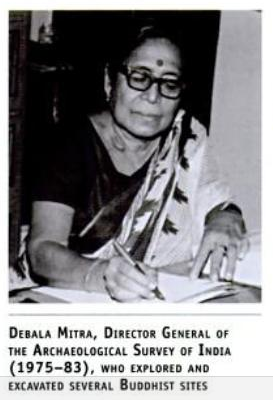 Mrs. Mitra was the Director General of the Archaeological Survey of India (1975-1983) [
Mrs. Mitra was the Director General of the Archaeological Survey of India (1975-1983) [